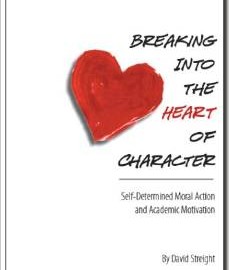Considering happiness in school, to some, might be akin to considering the colour scheme in the building or what flavour of juice is served in the cafeteria: a nice idea, but completely superfluous to the point of education. Sure it might be nice to pick the perfect shade of eggplant purple for the walls, but […]
Whether or not you teach in a school with students who could be labelled as “challenging”, reading Jeffrey Benson’s “Hanging In” will prove to be time well spent, as any teacher can learn from the gut-wrenching and heart-string-plucking stories in this 180 page, 2014 text. This book was my final check mark on my “required summer reading” list […]
This text was as useful as it was brief. This 104 page manual on supporting character development in schools was a swift, enjoyable read that helped refresh my perspective on teaching and mentoring young people. Truthfully, I might not pick it up off a shelf had it not been on our summer reading list. I […]
A slight confession: I wholeheartedly admit that when I saw the book “The Price of Privilege” on our reading list, by Madeline Levine, I was in part hoping for a book that would pick apart the devastating effects of power and affluence in white communities and how this privilege not only affects those people who are oppressed, […]
I happen to be one of the lucky few who has happened to find herself teaching at a school whose ideologies regularly match her own. I am nurtured and nourished by the idea of reading juicy, provocative, and challenging texts over the summer to push forward my practice as a teacher. I even, dare I […]
